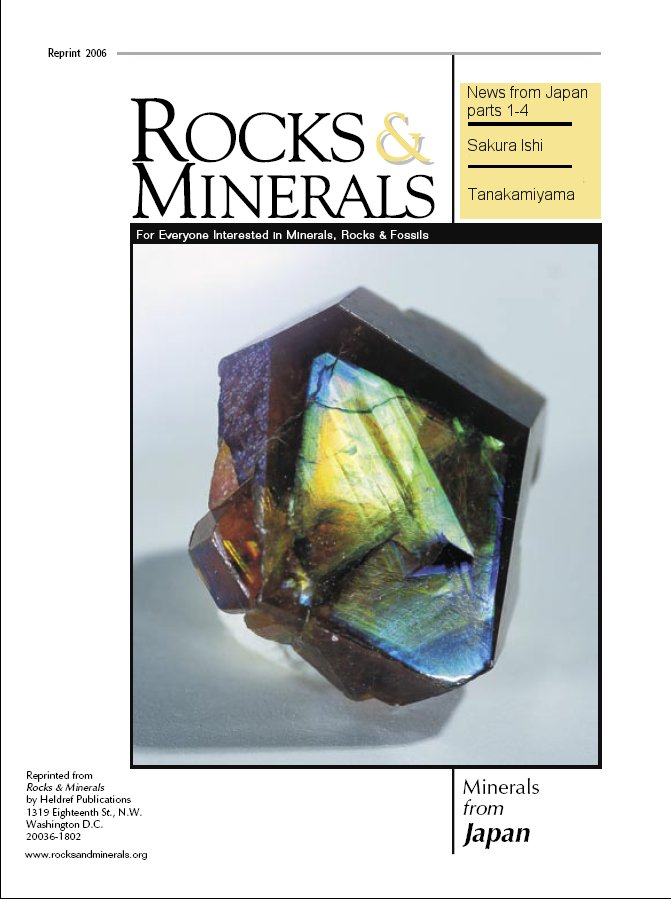



Sakura Ishi (Japanese for cherry blossom stone) are unique mineral formations that as far as we know occur only in central Japan. They started their existence as complex intergrowths of two related minerals, indialite and cordierite; polymorphs of the composition (Mg,Fe)2Al3(AlSi5O18). Polymorphs are minerals that share the same chemical composition but have different atomic structures (another example is graphite and diamond).
The result of a very specific set of changing conditions (of temperature,
pressure, chemistry, and time) and geologic history, initial hexagonal
prisms of indialite (the high temperature polymorph) were overgrown
by six crystals of cordierite (the low temperature polymorph).
Later, the central indialite transformed to cordierite. Finally,
the intergrowths were replaced by fine grained muscovite but retained
their original morphology; i.e. they are pseudomorphs (false form)
of the indialite and cordierite intergrowths. Cross-sections of
these pseudomorphs resemble flowers (cherry blossoms), although
they have 6-fold symmetry rather than the 5-fold symmetry of true
blossoms.
A detailed description of sakura ishi is given by John Rakovan,
Masao Kitamura, and Osomu Tamada (2006) Sakura Ishi: Mica pseudomorphs
of complex cordierite-indialite intergrowths from Kameoka, Kyoto
Prefecture, Japan. Rocks & Minerals, 81, 284-292.



